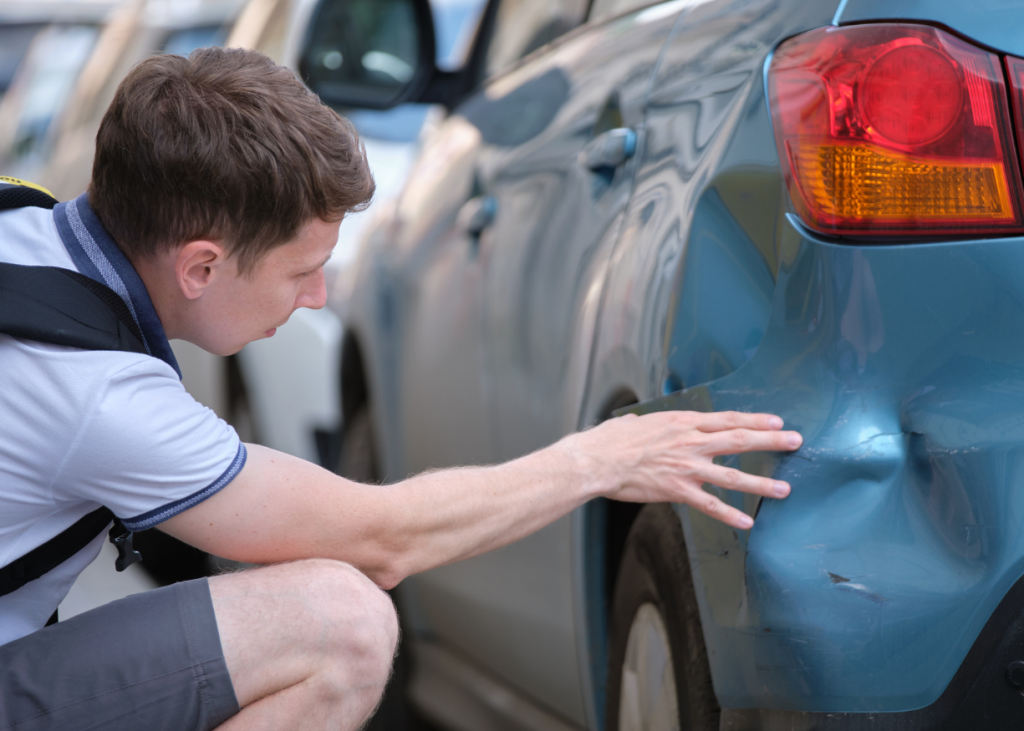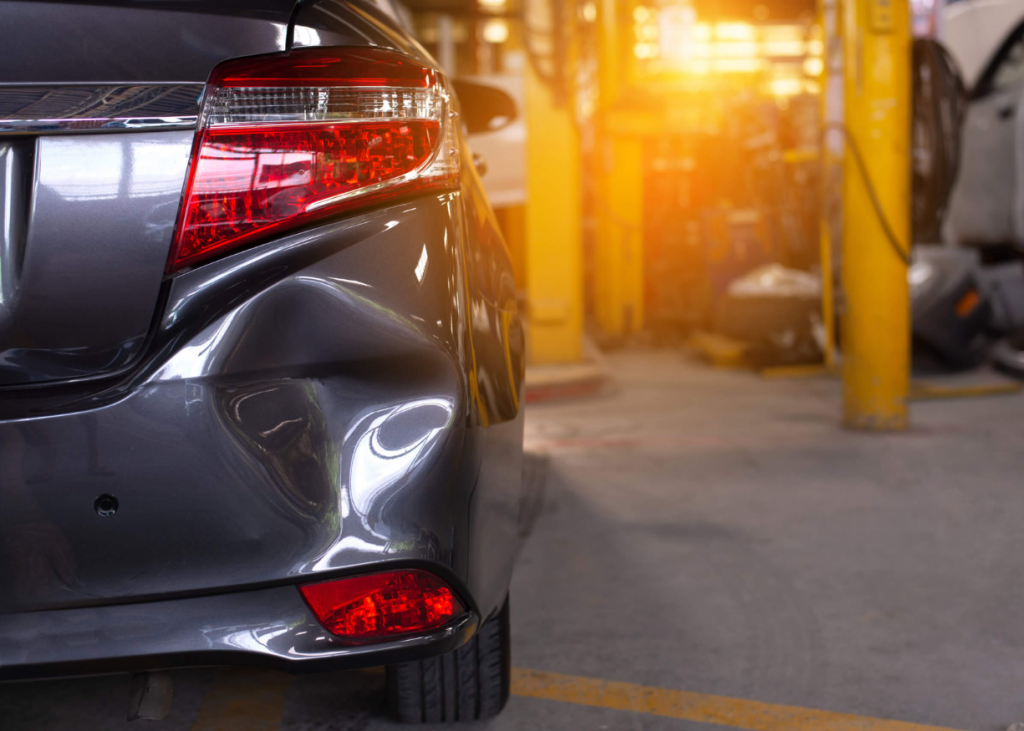You know that little dent in your bumper? The one you got when someone tapped you in the grocery store parking lot? Yeah, that one. The same dent you’ve been looking at for months thinking, “Eh, it’s not that bad. I can live with it.”
Well, here’s the thing – your car can’t live with it as well as you think. And neither can your wallet, if we’re being honest.
I get it. Life’s expensive, and a tiny dent seems like the least of your worries. You’ve got bills to pay, kids to feed, and that vacation you’ve been saving for. Why would you spend money fixing something that’s basically cosmetic, right?
Wrong. So very, very wrong.
That innocent-looking little dent is like a ticking time bomb, except instead of exploding, it’s slowly eating away at your car’s value and potentially setting you up for much bigger problems down the road. Let me explain why ignoring that dent might be one of the most expensive mistakes you’ll make this year.
The thing is, cars don’t just break down out of nowhere. They’re actually pretty chatty about their problems – you just need to know how to listen. Think of this as your crash course in car whispering. Once you know these warning signs, you’ll be amazed at how much your car has been trying to tell you.
It's Not Just About Looks (Though That Matters Too)

First off, let’s talk about what that dent is actually doing to your car. Modern bumpers aren’t just pretty plastic faces – they’re engineered safety systems designed to absorb impact and protect you in an accident. When they get damaged, even in small ways, they don’t work the way they’re supposed to.
Think of it like a helmet after you’ve dropped it. Sure, it looks fine, but the internal structure might be compromised. Your bumper’s the same way. That little dent could indicate damage to the foam core, the mounting points, or the reinforcement bar behind it.
And here’s something most people don’t realize – many modern bumpers have sensors, cameras, and other electronic components built right in. That tiny dent might have knocked something slightly out of alignment, and you won’t know until your parking sensors start acting weird or your backup camera goes haywire.
The Rust Monster Is Real (And Hungry)
Now, here’s where things get really fun. See, that dent probably scratched the paint or the protective coating on your bumper. Maybe you can’t see it yet, but it’s there. And once moisture gets in, you’ve basically sent out an invitation to rust.
“But wait,” you’re thinking, “it’s just plastic!”
Well, yes and no. Modern bumpers are often made of plastic, but they’re attached to metal mounting points, and many have metal reinforcement structures. When rust starts, it spreads like gossip in a small town. What starts as a tiny spot of corrosion can eventually affect the entire mounting system.
In LA’s climate, you might think rust isn’t a big deal because we don’t have harsh winters with road salt. But we’ve got something else – ocean air. That salty breeze that makes our sunsets so pretty? It’s also slowly eating away at any exposed metal on your car.
Your Car's Value Is Bleeding Out Slowly
Here’s a hard truth: every day you drive around with that dent, your car is worth less money. Not just a little less – significantly less.
When you go to trade in your car or sell it privately, that dent is going to cost you. Potential buyers see damage and immediately start calculating repair costs in their heads. Even if the repair would only cost $300, they’re thinking it might cost $800, so they’ll lowball you by $1,000 just to be safe.
It’s like going to a job interview with a stain on your shirt. Maybe you’re the most qualified person in the room, but that stain is all anyone’s going to remember. Your car’s the same way – that dent becomes the first thing people notice, and it colors their entire perception of your vehicle.
The Domino Effect Is Coming

Small problems have a funny way of becoming big problems, especially in cars. That dent might seem isolated now, but it’s probably affecting other parts of your car in ways you can’t see.
Maybe the impact shifted the bumper just slightly, so now it doesn’t align properly with the quarter panels. Over time, that misalignment creates stress points that can lead to cracks or more damage. Or maybe the mounting points are loose now, so your bumper rattles at highway speeds, which causes more wear and tear.
It’s like having a loose thread on your favorite sweater – ignore it long enough, and pretty soon you’ve got a hole.
Insurance Companies Have Long Memories
Here’s something that might surprise you. If you get in another accident and try to file a claim, your insurance adjuster is going to look at that old damage. They’re trained to spot pre-existing damage, and they’re not going to pay to fix something that was already broken.
So now you’re stuck paying for old damage and new damage, instead of just dealing with the original problem when it was small and manageable. Plus, if the new accident affects the same area, good luck proving which damage came from which incident.
The Safety Factor You're Ignoring
I know I mentioned this earlier, but it’s worth diving deeper into because it’s honestly the most important point. That dent isn’t just cosmetic damage – it’s structural damage to a safety system.
Your bumper is designed to crumple and absorb energy in a specific way during an accident. When it’s damaged, it can’t do its job properly. In a worst-case scenario, this could mean the difference between walking away from an accident and not walking away at all.
Think about it this way – you wouldn’t drive around with a cracked windshield or worn-out brakes, right? Well, a damaged bumper is just as much a safety issue.
The Psychological Cost Nobody Talks About
Here’s something that might sound silly, but bear with me. Every time you look at that dent, it bugs you just a little bit. Maybe you don’t consciously think about it, but it’s there in the back of your mind, making you feel slightly less good about your car.
Over time, that adds up. You stop taking care of your car as well because, hey, it’s already damaged. You might skip a car wash or put off other maintenance because you figure, “What’s the point?”
It’s like living in a house with a broken window – eventually, you stop noticing it, but it still affects how you feel about your home.
Time Is Not Your Friend
The longer you wait to fix that dent, the more expensive the repair gets. Why? Because other problems start developing. What might be a simple $200 fix today could turn into a $800 repair next year when the rust has spread and the mounting points have loosened.
Plus, parts get discontinued. If you wait too long, you might not be able to get an exact color match, or the replacement parts might not be available anymore. Then you’re looking at custom work or aftermarket parts that don’t fit quite right.
The Weather Is Working Against You
Even in sunny Southern California, weather takes a toll on damaged bumpers. Those temperature swings between day and night cause metal to expand and contract, which can make small cracks bigger. UV rays from our abundant sunshine can make plastic brittle around the damaged area.
And when we do get rain (remember rain?), water gets into those scratches and starts doing its damage from the inside out. It’s a slow process, but it’s relentless.
Your Future Self Will Thank You

Look, I know spending money on car repairs isn’t fun. Nobody wakes up excited about dropping cash at a body shop. But think of it as an investment in your future self.
Future you – the one who’s trying to sell this car in three years – is going to be really grateful that present you took care of this problem while it was still small. Future you won’t have to explain to potential buyers why there’s rust spreading across the back of the car, or why the bumper rattles, or why the backup sensors don’t work properly.
The good news is that fixing a small dent is usually pretty straightforward. Modern repair techniques can often fix minor damage without even replacing the whole bumper. Paintless dent repair, plastic welding, and advanced color-matching technology mean that in many cases, you’ll never know the damage was there.
The key word there is “small.” The longer you wait, the less likely it is that these quick, affordable techniques will work.
The Bottom Line
That tiny dent in your bumper isn’t as innocent as it looks. It’s a problem that’s going to get bigger, more expensive, and more complicated the longer you ignore it. Every day you drive around with that damage, you’re rolling the dice with your safety, your car’s value, and your future repair costs.
I’m not trying to scare you – I’m trying to save you money and hassle down the road. Take it from someone who’s seen what happens when small problems become big ones: fix it now, while it’s still small.
Your car will look better, drive safer, and be worth more when it comes time to sell or trade. And you’ll have peace of mind knowing that you took care of the problem before it took care of you.
When you’re ready to address that seemingly minor bumper damage, don’t settle for just any repair shop. Metro Collision Center has been helping Los Angeles drivers turn small problems into distant memories for years. Our experienced technicians understand that even tiny dents can lead to bigger issues, and we use the latest repair techniques to restore your bumper to its original condition – both cosmetically and structurally.
We work with all major insurance companies and offer transparent pricing, so you’ll know exactly what to expect.
Don’t let that small dent become a big headache. Bring your car to Metro Collision Center, where we believe that taking care of small problems today prevents expensive surprises tomorrow.
10 Most Common Questions About Minor Bumper Damage
How much does it typically cost to fix a small bumper dent?
Small dent repairs usually range from $150-$400, depending on the size, location, and whether paint work is needed. This is significantly less than the $800-$1,500 you might pay if the damage spreads or affects other components.
Can I fix a small bumper dent myself?
While there are DIY kits available, modern bumpers are complex and often contain sensors or other electronics. Professional repair ensures the structural integrity and safety features remain intact.
Will my insurance cover a small bumper dent repair?
It depends on your deductible and how the damage occurred. If your deductible is higher than the repair cost, you might pay out of pocket. However, some insurers offer programs for small claims that don’t affect your rates.
How long does it take to repair a minor bumper dent?
Simple repairs can often be completed in a few hours to a day. More complex repairs involving paint work might take 2-3 days. The key is addressing it while it’s still a simple repair.
Will the repair be noticeable after it's done?
When done professionally, a good repair should be virtually invisible. Modern color-matching technology and repair techniques can restore your bumper to like-new condition.
What happens if I ignore the dent completely?
Over time, you may see rust development, further cracking, loose mounting points, and decreased resale value. What starts as a $200 repair could become a $1,000+ problem.
Does a small dent affect my car's safety?
Yes, potentially. Bumpers are designed to absorb impact in a specific way. Even small damage can compromise their effectiveness in protecting you during an accident.
How do I know if the damage is more serious than it looks?
If you notice any misalignment, rattling, changes in how sensors work, or if the impact was significant, have it professionally inspected. Hidden damage is common in modern bumpers.
Will fixing the dent help my car's resale value?
Absolutely. Cars with visible damage typically sell for significantly less than similar vehicles in good condition. The repair cost is usually much less than the hit to resale value.
Can weather make a small dent worse over time?
Yes, temperature changes cause expansion and contraction that can worsen cracks, and moisture can lead to rust in exposed areas. Even in mild climates like LA, environmental factors slowly make damage worse.


